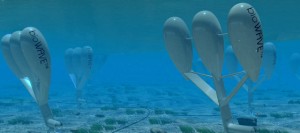
What do global climate change and the energy crisis have in common? The former is characterized by rising sea levels and glacial melt, while the latter offers an energy alternative in ocean wave power.
The United Nations Framework Convention on Climate Change (UNFCC) is in the 16th session of the Conference of the Parties (COP 16) in Cancun, Mexico. Delegates will deliberate international global climate change issues that are inextricably linked to water conservation and energy.
Foerd Ames is the owner of the Ocean Wave Energy Company (OWEC) and a Climate Science Reviewer for the Intergovernmental Panel on Climate Change. In a telephone interview Ames told WaterWideWeb, “We need to get these great minds [convened at the COP 16] to hash out solution scenarios to global climate change. We need an alliance of water related renewable energy and climatology”.
The population of Least Developed Countries (LDCs) are up close and personal with the adverse affects of global climate change. Island nations like the Maldives are being submerged under water. People are being displaced by rising sea levels, according to James. “We have an opportunity to use the extra water as fuel”, continued Ames.
As the climate conference in Cancun rolls on through 10 December 2010, delegates will deliberate on international policies of global climate change and the consequences associated with rising sea levels and glacial melt. Rising sea levels and glacial melt are a result of carbon gas emission from developed countries. Are there palpable solutions to the carbon emissions from nuclear, coal, and oil energy?
Ocean waves generate large amounts of energy. Ocean wave energy is a renewable and environmentally sustainable source of power. However, ocean waves are diffuse hence initiatives to channel this energy should be designed in a synergistic way, such that instruments are interconnected to mobilize wattage from the waves.
Ocean and wave projects present various possibilities to the water world. Ames asserts that ocean water can be desalinated, meaning the water can be purified of the salt properties. Desalinated ocean water provides a freshwater source that can be used to attenuate the implications of the global water crisis.
Moreover, splitting the ocean wave molecules into hydrogen and oxygen provides the highly coveted hydrogen that micro and macro scale systems require to function. The hydrogen from ocean waves can replace the nuclear, coal, and oil markets if experts continue to find efficient ways of mobilizing it. Reliance on foreign oil will decline and new markets for energy will emerge.
Ideally, environmentally sustainable energy should be the primary point of supply, forcing nuclear, coal, and oil supplies into the alternative energy solutions category. Ocean wave energy will decrease the carbon footprint of developed countries that can afford investment in this sort of technology. “We really have to embrace several other factors besides lowest cost when considering the future of renewable energy”, continued Ames.
Ultimately chances of reaching the Millennium Development Goal number 7, ensuring environmental sustainability, will be maximized if progress in the area of ocean wave energy is spearheaded. Ocean wave projects will require a monetary investment, but the cost to the environment will make it a worthwhile venture.
Advancements in the field of ocean wave energy are being researched and implemented. Currently, the Smithsonian Cooper-Hewitt, National Design Museum is featuring their triennial Why Design Now exhibition. A segment of the series highlights key design projects that focus on innovative energy projects.
The bioWAVE ocean-wave energy system is included in the Why Design Now feature exhibition. It was developed by the Australian based Bio-Power Systems. The bioWAVE system is a series of underwater units mounted to the seabed that are activated by ocean waves. The units are interconnected. Fluctuations in the ocean current are converted to generate energy at the ocean surface which produces electricity.
The bioWAVE units are fashioned to be in sync with the surrounding marine life. Each unit is estimated to produce 2 megawatts of energy. If bioWAVE energy farms are employed, enough clean power could be generated to power utility-scale projects.
Delegates at the climate change conference in Cancun, Mexico are grappling with policy decisions that will shape the future of Least Developed Countries, and the accountability of developed countries with respect to global climate change initiatives. Critical decisions on the future of environmentally sustainable alternatives that reduce carbon gas emissions must be considered behind the closed doors of the conference.
Will these decisions include energy alternatives such as ocean-wave power and other water generated sources of clean energy? The world must patiently wait for sound policies that are enforceable and which hold developed countries accountable for their energy decisions. If developed countries are going to be held accountable for the future of energy and global climate change response, advancements in clean energy that establish a new global market, not contingent upon foreign oil is a viable option.
If you enjoyed this article, you should also read:
Bridging Water and Eduction in Kenya
The Biggest Problem of the 21st Century: Water Security
Are MicroFinance Loans on Water Projects in the Developing World Paying Off?
How Can Aid Agencies Reach the Hispanic Community?
Tour Responsibly: Expanding Profits and Protecting Coral Reefs



Did you know that Romania has a technical solution with the highest efficiency to capture wave power?
Patent 108893 entitled Dynamic Engine for Sea Wave Energy Catching. A pioneering invention. It is estimated that “dynamic engine” has the ability to catching wave energy at a rate of over 80% while the other technical solutions known worldwide, are not able to capture wave energy with a higher percentage of about 10-15%.
Cosma Vasile Romania.
Code access for “Dynamic Engine”: PDF. 28723051. RO 108893